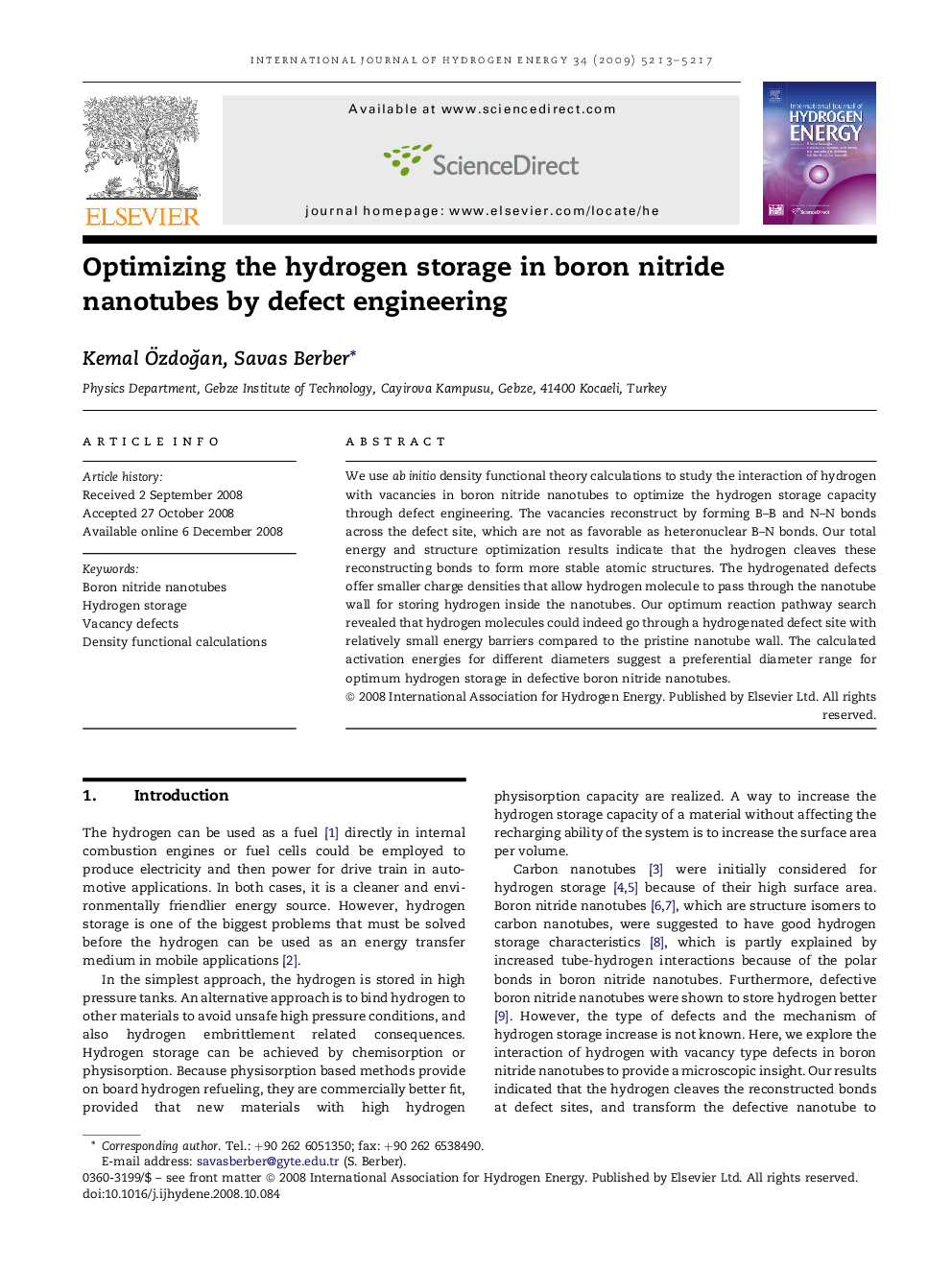| Article ID | Journal | Published Year | Pages | File Type |
|---|---|---|---|---|
| 1278835 | International Journal of Hydrogen Energy | 2009 | 5 Pages |
We use ab initio density functional theory calculations to study the interaction of hydrogen with vacancies in boron nitride nanotubes to optimize the hydrogen storage capacity through defect engineering. The vacancies reconstruct by forming B–B and N–N bonds across the defect site, which are not as favorable as heteronuclear B–N bonds. Our total energy and structure optimization results indicate that the hydrogen cleaves these reconstructing bonds to form more stable atomic structures. The hydrogenated defects offer smaller charge densities that allow hydrogen molecule to pass through the nanotube wall for storing hydrogen inside the nanotubes. Our optimum reaction pathway search revealed that hydrogen molecules could indeed go through a hydrogenated defect site with relatively small energy barriers compared to the pristine nanotube wall. The calculated activation energies for different diameters suggest a preferential diameter range for optimum hydrogen storage in defective boron nitride nanotubes.
